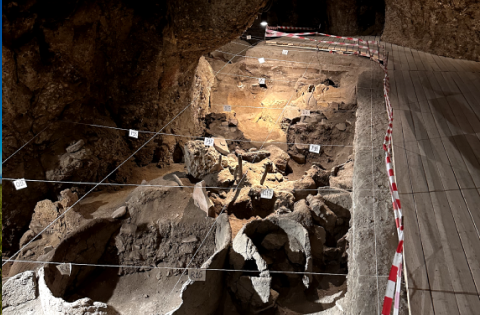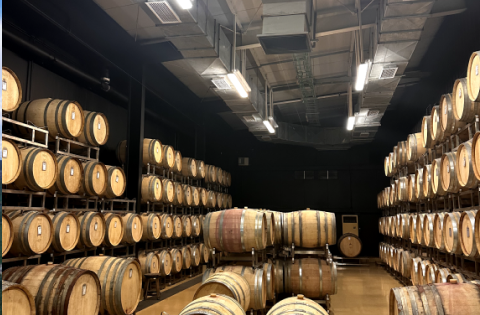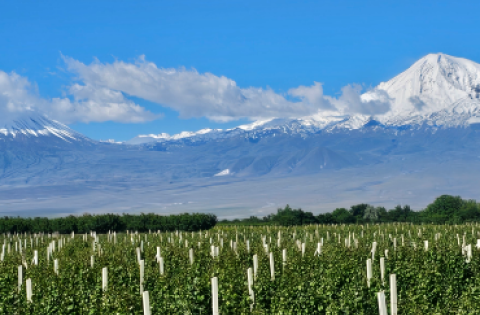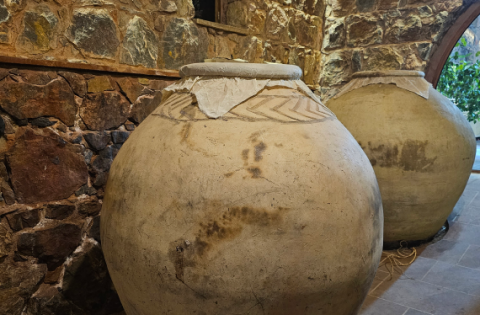Wine and Grapes have for centuries been reserved a significant place in social and economic life, and in the Armenian perception they have grown into exceptionally valued criteria. Paleobotanical evidence on viticulture suggests several world centers for plant domestication. We can single out the South -West Asian area comprising the Caucasus, the Armenian Highland, Asia Minor and Iranian Plateau due to the proliferation of wild forms of domesticated plants. The oldest artefacts attesting to the use of grapes date back to the 1st half of the VI millennium BC, discovered in the Neolithic settlement of Aratashen, not far from Vagharshapat. Many archaeological sites for wine making date back to the Urartian period from 9-6th centuries BC.
Places like Erebouni, Teyshebaini illustrate that grapes that they used were already fully -cultured. Comparison with the seeds of modern -day grapes makes it clear that seeds from Urartian period are quite similar to local varieties currently cultivated in the Ararat valley: Voskehat, Kharji, Garan Dmak. Archaeological data and legends transferred through written testimony affirm that already in the III millennium BC wine had an important presence in Ancient Armenia’s economic and social life. Akkadian cuneiform inscriptions of the III millennium BC describe how wine in special vessels was transported via the Euphrates from the Taurus mountains to the Mesopotamian city of Mari. Herodotus also recounts to us in details how those shipments were made from Armenia to Babylon much later. Ancient irrigation systems discovered in various regions of the Armenian Highlands also attest to advanced land cultivation practices and especially developed horticulture and viticulture.
Wine has often symbolized the source of life during rituals. This is further confirmed by animal or shoe shaped vessels, rhytons, most of which were undoubtedly used for wine of the sacred gush. Silver goblet from Karashamb Royal Burial Vault (XXII-XXI centuries BC) best illustrates the significance of wine in the public perception of the ancient Armenian Highland. Ancient authors share remarkable information about wine making and viticulture in the territory of Armenia.
The works of Xenophon, Herodotus and Strabo contain interesting testimony on the proliferation of winemaking and viticulture. This is just a short note on the winemaking history in the Armenian Highlands and its significance in the Ancient World. For more information go through the article and discover amazing wineries of Modern Armenia reviving back centuries-old winemaking traditions nowadays.
https://www.nationalgeographic.com/travel/article/paid-content-armenia-best-wineries












